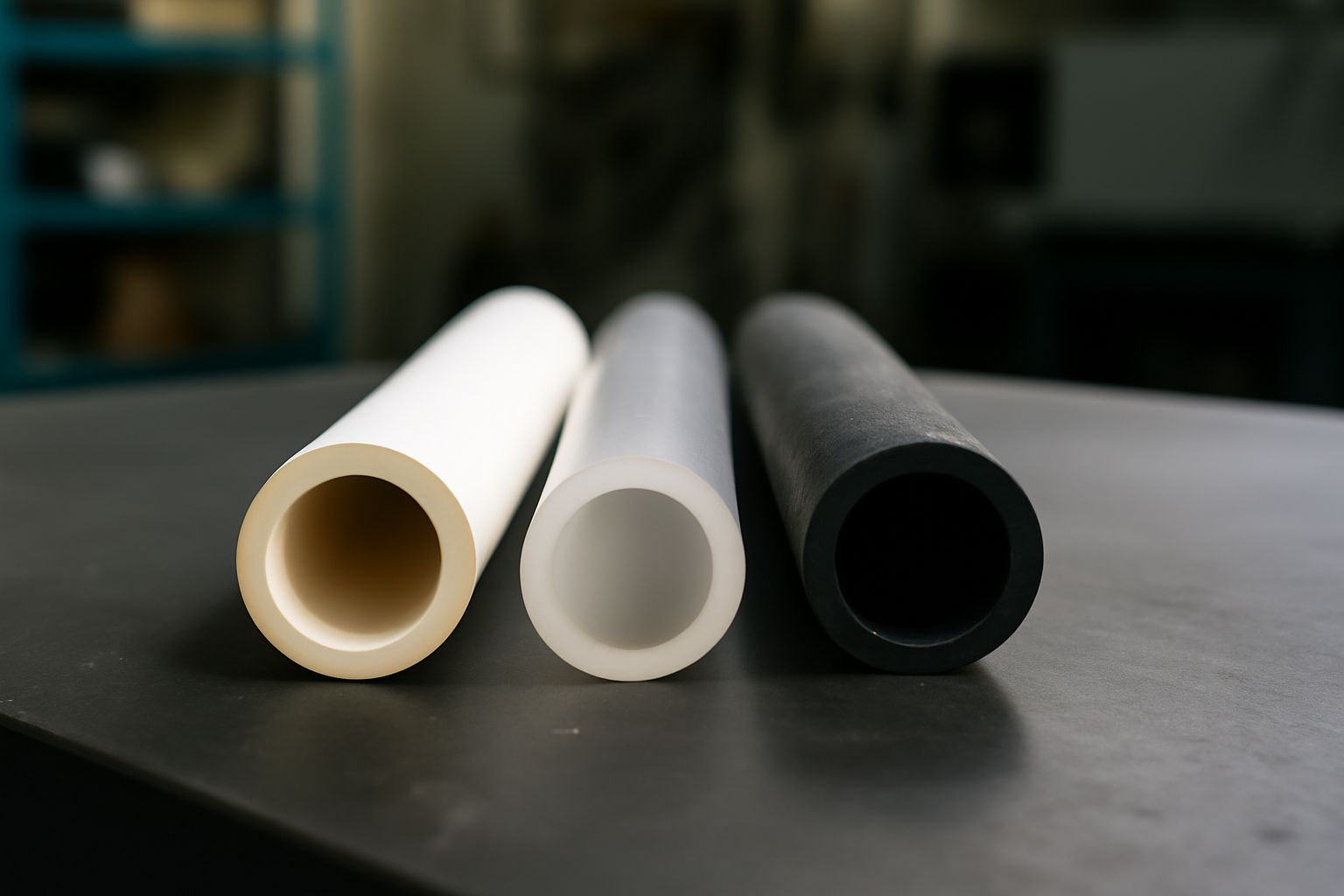Трубки из оксида алюминия, кварца и карбида кремния различаются по максимальной температуре, прочности и химической стабильности, что делает их тщательный выбор критически важным для печей, реакторов и прецизионных гидравлических систем.

Какие критические свойства определяют наилучшую трубку для использования при высоких температурах?
Термическая стабильность и механическая прочность являются важнейшими факторами, определяющими эксплуатационные характеристики трубок при повышенных температурах. Трубки из алюмооксидной керамики обладают исключительной стойкостью к температурам до 1700 °C, превосходя кварцевые трубки как по прочности, так и по стойкости к тепловым ударам. Трубки из карбида кремния (SiC) Они выдерживают несколько более высокие максимальные температуры и обладают превосходной теплопроводностью, что делает их пригодными для использования в специализированных системах отопления. Кварц, широко используемый благодаря своей чистоте и оптическим свойствам, ограничен чувствительностью к тепловым ударам и меньшей прочностью.
В моих инженерных проектах трубки из оксида алюминия неизменно обеспечивали надежную работу при быстрых циклах нагрева, в то время как трубы из карбида кремния выбирались в основном для агрессивных промышленных печей, где первостепенное значение имели как тепловой поток, так и долговечность.
| Свойство | Алюминиевая трубка | Кварцевая трубка | Трубка SiC |
|---|---|---|---|
| Максимальная рабочая температура (°C) | 1650-1700 | ~1100 | 1550-1700 |
| Стойкость к тепловому удару | Высокий | Низкий | Очень высокий |
| Прочность на изгиб (МПа) | >350 | ~65 | >300 |
Как различается химическая стойкость трубок из оксида алюминия, кварца и SiC?
Химическая инертность Существенные различия: оксид алюминия выдерживает воздействие большинства кислот и щелочей, за исключением сильных щелочей при высоких температурах. Кварц обладает высокой устойчивостью к большинству кислот (кроме плавиковой кислоты), но реагирует со щелочами. Карбид кремния (SiC) демонстрирует высокую устойчивость к агрессивным газам, кислотам и расплавленным металлам, но может окисляться в экстремальных условиях. В реальных условиях я использовал трубки из оксида алюминия для процессов с кислым и нейтральным pH, а также трубки из карбида кремния (SiC) в условиях, где вероятно воздействие агрессивных газов или паров металлов. Кварц выбирают только в тех случаях, когда также важны высокая чистота и прозрачность.
Правильный выбор зависит от точного сочетания химических веществ и температуры. Например, американский производитель печей сообщил* о переходе на трубки из карбида кремния, что привело к увеличению интервала обслуживания на 40% при работе с хлорсодержащими средами по сравнению с ранее использовавшимися кварцевыми трубками.
| Химическая стойкость | Глинозем | Кварц | SiC |
|---|---|---|---|
| Сильные кислоты | Отличный | Отличный | Отличный |
| Сильные щелочи | Ограниченно (при высокой температуре) | Бедный | Хороший |
| Плавиковая кислота (HF) | Хороший | Очень плохо | Отличный |
| Расплавленные металлы | Справедливый | Бедный | Отличный |
*Кейс адаптирован из: Промышленное отопление
Каковы типичные области применения каждого материала в промышленности?
Выбор материала Выбор трубок зависит от технологического процесса: оксид алюминия широко используется для изготовления печных трубок, газоанализаторов и высоковольтных изоляторов благодаря своей прочности и изолирующим свойствам. Кварц находит применение в полупроводниковой промышленности и производстве лабораторной посуды, где особенно важны чистота и теплопроницаемость. Карбид кремния широко применяется в суровых условиях обжига в печах, печах и при транспортировке коррозионных химических веществ благодаря своей устойчивости к циклическим перепадам температур и воздействию агрессивных сред.
По моему опыту поддержки европейских производителей печей, многие из них перешли с кварца на глинозем после многочисленных отказов из-за трещин. Аналогичным образом, в современных химических реакторах теперь всё чаще используются трубки из карбида кремния (SiC), чтобы продлить срок службы системы и сократить интервалы очистки.
| Приложение | Алюминиевая трубка | Кварцевая трубка | Трубка SiC |
|---|---|---|---|
| Печные трубы | Да (до 1700°C) | Ограничено (до ~1100°C) | Да (до 1700°C) |
| Лабораторное использование | Да | Да (особенно чистота/оптика) | Иногда |
| Газоанализаторы/Датчики | Да | Да | Да |
| Химическая обработка/печь | Да | Иногда | Да (предпочтительно) |
Могут ли трубки из оксида алюминия заменить кварцевые и карбид-кремниевые трубки без ущерба для производительности?
Керамические трубки из оксида алюминия часто могут заменить кварцевые и карбид-кремниевые трубки. в условиях высоких температур, не подверженных экстремальной коррозии, обеспечивая превосходную прочность, хорошую теплоизоляцию и более широкую химическую совместимость. Однако для применений, требующих оптической прозрачности (например, УФ-процессы с плавленый кварц ) или сверхвысокой теплопроводности (как в случае с SiC), заменители могут не отвечать всем требованиям.
Мы регулярно заменяем кварц на оксид алюминия в аналитических приборах, продлевая срок службы трубок и сокращая частоту технического обслуживания. Однако в условиях быстрых перепадов температур и экстремальных атмосферных условий карбид кремния (SiC) остаётся незаменимым материалом благодаря превосходной стойкости к тепловому удару и коррозии.
| Сценарий замены | Исход |
|---|---|
| Оксид алюминия заменяет кварц в лабораторных печах | Повышенная прочность и срок службы |
| Оксид алюминия заменяет карбид кремния при обработке в мягких кислотных условиях | Более низкая стоимость, адекватное сопротивление |
| Оксид алюминия используется вместо кварца в аналитических приборах | Лучшая механическая прочность |
| SiC, необходимый для печей с быстрой цикличностью | Недостаточно оксида алюминия — используйте SiC |
Т Подводя итог, можно сказать, что трубки из оксида алюминия обеспечивают уникальное сочетание термической стабильности, прочности и химической стойкости, что делает их идеальной заменой кварца и SiC во многих — но не во всех — востребованных областях применения.




 info@csceramic.com
info@csceramic.com







 +86 18273288522
+86 18273288522